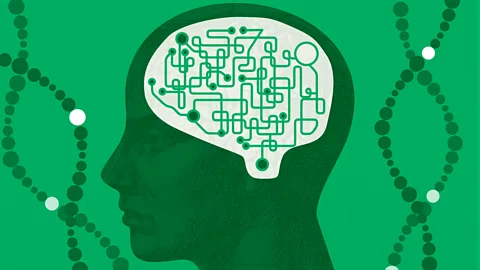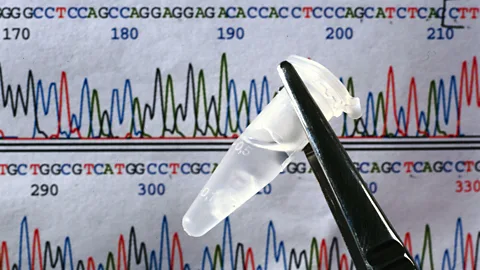The genetic mystery of why some people develop autism
 Serenity Strull/ Getty Images
Serenity Strull/ Getty ImagesGenetic factors are thought to play a major role in the development of autism – but for decades what they are has proven elusive. Now scientists are starting to uncover clues.
Until the 1970s, the prevailing belief in psychiatry was that autism was a consequence of bad parenting. In the 1940s, the Austrian psychiatrist Leo Kanner had coined the controversial "refrigerator mother" theory suggesting that autism arose from early childhood trauma, created by mothers who were cold, uncaring and rejected their children.
Daniel Geschwind, a neuroscience and genetics professor at the University of California, Los Angeles (UCLA), says that this is now rightly recognised as being deeply damaging and wrong – but it took the better part of three decades for Kanner's theory to be debunked. It was not until 1977, when a couple of psychiatrists carried out a landmark study demonstrating that autism often runs in identical twins, that a more nuanced and accurate picture of autism's origins began to emerge.
That 1977 study was the first time that a genetic component of autism had been identified. Research has since shown that when one identical twin is autistic, the likelihood that the other twin will be too can be more than 90%. Meanwhile, the chances of fraternal twins of the same sex each sharing a diagnosis of autism are around 34%. These levels are substantially higher than the typical rate of occurrence among the wider population, of around 2.8%.
It is now widely accepted that there is a strong genetic component to autism. But which genes are involved and how their expression is influenced by other factors are only just starting to be unravelled.
Tiny differences
Even after the twin study in 1977, it would take several more decades for the full subtleties of the interaction between autism and the human genome to become apparent.
Between any two individuals, the amount of genetic variation is around 0.1%, meaning that approximately one letter or base pair out of every 1,000 in their DNA will be different. "Sometimes these variations have no effect at all," says Thomas Bourgeron, a neuroscience professor at the Institut Pasteur in Paris. "Sometimes they have a little effect, and sometimes they have a super strong effect."
Currently, "super strong" variations have been identified in up to 20% of all cases of autism, with a single mutation in a single gene being largely responsible for driving critical neurodevelopmental differences. The role of these single gene mutations and how they arise is one of the most heavily studied areas in autism research, because as Bourgeron explains, they often result in severe and life-limiting disabilities.
 Getty Images
Getty Images"This is not like the autism you see in the movies," Bourgeron says. "If you're born with one of these major mutations, there's a high likelihood you'll end up with intellectual disability or motor delay [the ability to coordinate muscle groups] or epileptic encephalopathy. It has a major impact on their quality of life and their family in most cases."
So far scientists have identified at least 100 genes where these mutations can occur. Bourgeron himself made one of the first discoveries in March 2003 when he identified two gene mutations linked to autism. Each impacted proteins involved in synaptogenesis, the process of forming connections between neurons in the brain. It was a major breakthrough, although it barely made a ripple in the media at the time, with Bourgeron recalling how former US President George W Bush had recently declared war on Iraq.
But more discoveries were to come, including mutations in the Shank3 gene which are estimated to occur in less than 1% of people with autism. We now know that some of these mutations are known as de novo variants, which means that they occur through random chance in a developing embryo and aren't present in the blood DNA of either the mother or father. Geschwind describes de novo variants as being akin to a "bolt of lightning", that is both unexpected and rare.
However, in other cases, these mutations can have been ed on by one of the parents, even if both appear to be neurotypical, a more complex phenomenon which researchers have only begun to understand in the past decade.
"You might wonder, if an autistic child has inherited a rare gene mutation from one of their parents, why doesn't the parent have autism too":[]}
